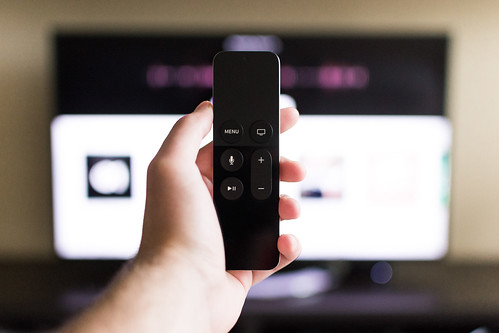
a Polish keyboard: the Medium website discovered a strange problem with its S when users complained. The problem? Deeply embedded. CC-licensed photo by Marcin Wichary on Flickr.
You can sign up to receive each day’s Start Up post by email. You’ll need to click a confirmation link, so no spam.
A selection of 9 links for you. Have a beer. I’m @charlesarthur on Twitter. Observations and links welcome.
Suggestion: preorder Social Warming, my forthcoming book, due out June 24. And in audiobook, which I’m going to record this week. Hot off the press.
Buying a pink NFT cat was a crypto nightmare • BBC News
Cristina Criddle:
»
I settled on Kim Catdarshian – a pink creature dotted with diamonds in her fur and a cocked eyebrow.
According to her profile, she has a “confuzzled” mouth and can be snappy, taking 10 minutes to “cool down”. Sounds about right, given her diva namesake.
NFTs are sold in cryptocurrency. My purchase was in ETH, known as Ether, which is stored on the Ethereum blockchain. Similar to Bitcoin, it is a highly volatile currency and relies on computers to verify transactions. This process – called mining – uses huge amounts of energy, often from fossil fuels.
Kim was on sale for 0.006 ETH, which at the time was worth about £13.Using a Chrome extension called MetaMask, I set up a digital wallet to convert money from my bank account into cryptocurrency. I transferred the minimum amount: £30 and a “gas fee”, required for every ETH transaction to pay the miners who keep the network running. It is similar to tipping a waiter.
Depending on how many transactions are being processed on the Ethereum blockchain, and how many miners are available, the cost of gas can rise and fall. The higher your price, the faster your transaction goes through.
After my initial payment, all I could afford was less than half the recommended rate for gas. Transferring my ETH back into my bank account would have cost more money, so I reluctantly ploughed on, hoping a miner would take pity and process my NFT bid for a low fee. Then, I was left waiting in the ether for the sale to be approved.
While the value of my ETH shot up and down. I considered spending more money to speed up the transaction, but I held firm and my patience paid off three days later, when Kim Catdarshian finally became mine.
The whole experience sucked all the fun out of my fluffy pink friend and if I wanted to sell Kim, it would cost me. I should have done more research into all the extra charges involved in ETH, but it was just meant to be a whimsical joke present.
Unless you’re prepared to spend a lot of money and time learning the market – it is hard to imagine making money from NFTs. Even though I am a technology journalist (albeit not a crypto-expert), I was baffled by how complicated the process was, and realised I wasn’t alone.
Countless users have complained in online forums about transactions getting “stuck” after demand, and high gas prices clogging up the network.
«
13 years on, still not ready for prime time. The responses from the crypto bros, of course, was that (1) she was doing it wrong (2) it’s going to be much easier Real Soon Now.
unique link to this extract
WhatsApp now won’t limit functionality if you don’t accept its new privacy policy • The Verge
Jay Peters:
»
Earlier this month, Facebook-owned WhatsApp said that users would lose functionality over time if they didn’t accept its new privacy policy by May 15th. In a reversal, Facebook now says that plan has changed, and users who don’t accept the updated policy actually won’t see limited functionality (via TNW).
“Given recent discussions with various authorities and privacy experts, we want to make clear that we will not limit the functionality of how WhatsApp works for those who have not yet accepted the update,” a WhatsApp spokesperson said in a statement to The Verge. WhatsApp tells The Verge that this is the plan moving forward indefinitely.
The rollout of the policy has been a confusing mess, and raised concerns that WhatsApp would begin sharing more of users’ personal data with Facebook. (Some WhatsApp user data, such as users’ phone numbers, is already shared with Facebook, a policy that went into place in 2016.) WhatsApp has stressed this is not the case, though — the policy update is regarding messages sent to businesses via WhatsApp, which may be stored on Facebook’s servers.
«
Delayed and then revoked. Classic example of how management discovers that it has made a bad decision.
unique link to this extract
The curious case of the disappearing Polish S • Medium Engineering
Marcin Wichary:
»
A few weeks ago, someone reported this to us at Medium:
»
“I just started an article in Polish. I can type in every letter, except Ś. When I press the key for Ś, the letter just doesn’t appear. It only happens on Medium.”
«
This was odd. We don’t really special-case any language in any way, and even if we did… out of 32 Polish characters, why would this random one be the only one causing problems?
Turns out, it wasn’t so random. This is a story of how four incidental ingredients spanning decades (if not centuries) came together to cause the most curious of bugs, and how we fixed it.
«
Typewriters, communism, habits and – inevitably – Microsoft Windows.
unique link to this extract
By your powers combined: Is it too late for Google’s wearable alliance? • Android Authority
Adamya Sharma:
»
Samsung’s Galaxy Watch 3 is perhaps one of the best premium smartwatches you can buy right now. Fitbit has devices like the Versa 3 and the Sense that bring good value to the table. Google still doesn’t have a Pixel Watch, but devices like the Mobvoi TicWatch Pro 3 and Fossil Gen 5 perhaps represent the best of what Wear OS currently offers.
However, all three platforms and brands combined supply far fewer apps compared to the Apple Watch. While Samsung and Wear OS watches are better off than Fitbit, whose app selection is anemic, they are still not on a level playing field with Apple.
What’s also lacking with Samsung, Wear OS, and Fitbit wearables is the uncanny seamlessness of the Apple Watch. Aside from apps, its productivity features outnumber those of all three platforms.
The Apple Watch’s hardware is also far superior. The Series 6 runs on Apple’s new S6 SoC based on the A13 Bionic chip used on iPhone 11. That’s like an Android watch powered by the Snapdragon 888. Of course, the latter doesn’t exist.
There’s no guarantee that Google’s alliance with Samsung or Fitbit could ever result in the much-needed hardware boost for Wear OS smartwatches that are sluggish and slower in comparison.
Other Wear OS problems also hang in the balance right now. The most annoying thing about the software is the lack of timely updates. Even with Samsung’s collaboration, Google will most likely be the one to issue future Wear OS updates. However, unlike Android proper, it has never followed a regular schedule for Wear OS updates. The situation is reminiscent of LG’s awful update center that promised timely software updates but failed spectacularly in doing so.
«
“Uncanny seamlessness of the Apple Watch” is quite the phrase. It’s not uncanny; it’s the result of lots of iterations, and a relentless will to make it better. (Contrast how little effort went into the HomePod: two iterations over three years, with the most impressive one being discontinued after excessive sales predictions.)
By contrast, Google was ahead of Apple by about a year with Wear OS, but the lack of integration between Google and OEMs and chipmaker meant that was wasted. Neil Cybart suggests Apple now has a ten-year lead in wearables.
unique link to this extract
Friends don’t let friends become Chinese billionaires • Forbes
Ray Kwong:
»
I’m no statistics whiz, but it seems to me that a Chinese billionaire dies every 40 days.
China Daily reported Friday that unnatural deaths have taken the lives of 72 mainland billionaires over the past eight years. (Do the math.)
Which means that if you’re one of China’s 115 current billionaires, as listed on the 2011 Forbes Billionaires List, you should be more than a little nervous.
Mortality rate notwithstanding, what’s more disturbing is how these mega wealthy souls met their demise. According to China Daily, 15 were murdered, 17 committed suicide, seven died from accidents and 19 died from illness. Oh, yes, and 14 were executed. (Welcome to China.)
«
Possibly the “suicide” number might want re-examination, to see if any ought to be recategorised.
unique link to this extract
Ignore the naysayers – low emission zones do work • The Guardian
Gary Fuller:
»
Lessons from London’s [ultra low emission] zone [ULEZ] and the hundreds that operate in Europe counter many of the myths around these schemes.
First, the zones work, if they are sufficiently ambitious. London’s ultra-low emission zone (Ulez) reduced nitrogen dioxide by 37%, compared with roads far outside the zone. Following Sadiq Kahn’s re-election as London mayor, the Ulez will become 18 times larger.
Second, benefits do not start when the charge starts. For the Ulez, a 20% decrease in nitrogen dioxide came as taxis, buses and delivery vehicles were upgraded ahead of charging. Pre-scheme benefits were also seen when London first introduced a low emission zone in 2008. In Leeds, the pre-charging gains were thought to be sufficient and the zone was cancelled in 2020. It remains to be seen if benefits will be locked in without the charge.
Third, air pollution does not get worse outside the zone due to diverting vehicles. Instead the experience from London and cities in Germany show that the cleaner vehicles are also used in the surrounding area, spreading the benefit.
Fourth, it is often said that the zone charges unfairly penalise the least well off. In fact, poorer communities have most to gain. They experience worse air pollution than their richer counterparts but, when it comes to driving, they contribute less to the problem. Yes, placing charges on older vehicles would have more of an impact in poorer areas, but this effect is small: a 2019 study found that cars in the UK’s poorest areas were, on average, just over a year older than those owned by the most well off. This was due to multi-car households in wealthier areas and the age of their second, third and in some cases fourth cars.
«
Divisive COVID ‘lab leak’ debate prompts dire warnings from researchers • Nature
Amy Maxmen:
»
US headlines are exploding with revived interest in the lab-leak hypothesis, many of them related to two articles in The Wall Street Journal. One story refers to an undisclosed document from an anonymous official who was part of former US president Donald Trump’s administration, suggesting that three WIV researchers were sick in November 2019. And the second says that Chinese authorities stopped a journalist from entering an abandoned mine where WIV researchers recovered coronaviruses from bats in 2012. The researchers have long maintained that none of the viruses were SARS-CoV-2. Responding to The Wall Street Journal, China’s foreign ministry said: “The US keeps concocting inconsistent claims and clamoring to investigate labs in Wuhan.”
Kristian Andersen, a virologist at Scripps Research in La Jolla, California, maintains that no strong evidence supports a lab leak, and he worries that hostile demands for an investigation into the WIV will backfire, because they often sound like allegations. He says this could make Chinese scientists and officials less likely to share information. Other virologists suggest that such sentiments could lead to more scrutiny of US grants for research projects conducted in China. They point to a coronavirus project run by a US non-profit organization and the WIV that was abruptly suspended last year after the US National Institutes of Health pulled its funding. Without such collaborations, says Andersen, scientists will have difficulty discovering the source of the pandemic.
More is at stake than the discovery of COVID-19’s origins, however. Global health-policy analysts argue that it’s crucial for countries to work together to curb the pandemic and prepare the world for future outbreaks. Actions needed, they say, include expanding the distribution of vaccines and reforming biosecurity rules, such as standards for reporting virus-surveillance data. But such measures require a broad consensus among powerful countries, says Amanda Glassman, a global-health specialist at the Center for Global Development in Washington DC. “We need to look at the big picture and focus on incentives that get us where we want to go,” she says. “A confrontational approach will make things worse.”
«
The real problem here is that you’re trying to prove a negative: that the virus absolutely positively didn’t leak from the laboratory. How do you prove that? You’d have to let investigators run riot through it, which the CCP wouldn’t like or approve one little bit. The whole scenario is strongly reminiscent of the runup to the Iraq war: the US and UK were insistent there were weapons of mass destruction there somewhere in Iraq. Hans Blix, who was on the ground visiting installations, said he’d found nothing. You know how that ended up.
unique link to this extract
Amazon Prime is an economy-distorting lie • BIG by Matt Stoller
Matt Stoller:
»
Shipping and logistics is extremely expensive, far more than the membership fees charged by Prime; Amazon spent $37.9bn on shipping costs in 2019, and much more in 2020. No matter how amazing your logistics operation, you can’t just offer free shipping to customers without having someone pay for it. Amazon found its solution in the relationship between Prime and Marketplace. It forced third party sellers to de facto pay for its shipping costs, by charging them commissions that reach as high as 45%, according to Racine, merely to access Amazon customers. That’s nearly half the revenue of a seller going to Amazon! And this high fee isn’t just because fulfillment or selling online is expensive; Walmart charges significantly less for its fulfillment services and access charges to its online market, and eBay’s market access fees are also much lower than Amazon’s.
…How does Amazon force sellers to pay such high fees? Monopolization! The scheme itself is subtle, and requires a bit of explanation. Nearly anyone may list their wares on Amazon, but the ability to actually get your wares in front of customers is dependent on being able to ‘win the Buy Box,’ which is that white box on the right-side that you get to after you search for an item on Amazon. Over 80% of Amazon purchases go through the Buy Box. The Buy Box is the lever Amazon uses to control access to customers.
…In addition, sellers are prohibited from charging for shipping from Prime members, though they are allowed to charge shipping from non-Prime members.
How do sellers handle these large fees from Amazon, and the inability to charge for shipping? Simple. They raise their prices on consumers. The resulting higher prices to consumers, paid to Amazon in fees by third party merchants, is why Amazon is able to offer ‘free shipping’ to Prime members. Prime, in other words, is basically a money laundering scheme. Amazon forces brands/sellers to bake the cost of Prime into their consumer price so it appears like Amazon offers free shipping when in reality the cost is incorporated into the consumer price.
«
If your monopolistic activity is raising prices to consumers, suddenly US antitrust gets interested. Stoller’s piece was triggered by the lawsuit filed last week by the Washington DC attorney, Karl Racine.
unique link to this extract
Unredacted Google lawsuit docs detail efforts to collect user location • Business Insider
Tyler Sonnemaker:
»
Newly unredacted documents in a lawsuit against Google reveal that the company’s own executives and engineers knew just how difficult the company had made it for smartphone users to keep their location data private.
Google continued collecting location data even when users turned off various location-sharing settings, made popular privacy settings harder to find, and even pressured LG and other phone makers into hiding settings precisely because users liked them, according to the documents.
Jack Menzel, a former vice president overseeing Google Maps, admitted during a deposition that the only way Google wouldn’t be able to figure out a user’s home and work locations is if that person intentionally threw Google off the trail by setting their home and work addresses as some other random locations.
Jen Chai, a Google senior product manager in charge of location services, didn’t know how the company’s complex web of privacy settings interacted with each other, according to the documents.
Google and LG did not respond to requests for comment on this story.
The documents are part of a lawsuit brought against Google by the Arizona attorney general’s office last year, which accused the company of illegally collecting location data from smartphone users even after they opted out.
A judge ordered new sections of the documents to be unredacted last week in response to a request by trade groups Digital Content Next and News Media Alliance, which argued that it was in the public’s interest to know and that Google was using its legal resources to suppress scrutiny of its data collection practices.
The unsealed versions of the documents paint an even more detailed picture of how Google obscured its data collection techniques, confusing not just its users but also its own employees.
Google uses a variety of avenues to collect user location data, according to the documents, including WiFi and even third-party apps not affiliated with Google, forcing users to share their data in order to use those apps or, in some cases, even connect their phones to WiFi.
«
The Arizona AG’s site was unreachable when I tried to look at the documents, but others have seen them. They’re pretty damning.
unique link to this extract
Errata, corrigenda and ai no corrida: none notified












